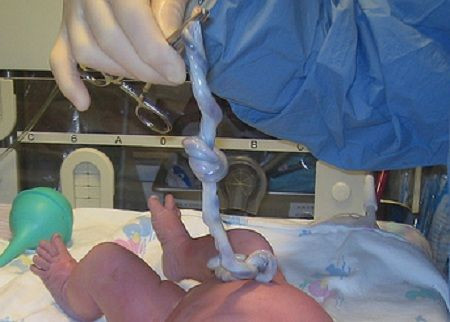Heart Attack Damage Repair: Cord Blood Researchers Report Progress

British researchers are reporting findings from a new study that may offer hope to heart attack victims seeking to repair damaged tissue.
Researchers found that heart muscle-like cells grown using stem cells from human umbilical cord blood may be able to be used to help repair heart muscle cells damaged by a heart attack.
The study was conducted by the UK’s National Institute for Health Research and funded by the British Heart Foundation.
U.S. Toll of Heart Attacks
Every year about 785,000 Americans have a first heart attack, and another 470,000 who have already had one or more heart attacks have another attack.
Cardiovascular diseases, including heart disease and stroke, account for more than one-third (33.6%) of all U.S. deaths. In 2010, heart disease will cost the United States $316.4 billion. This total includes the cost of health care services, medications, and lost productivity, according to the Center for Disease Control and Prevention (CDC).
Stem Cell Findings
Stem cells are located in bone marrow, peripheral blood and cord blood (found in the umbilical cord and collected after a baby’s birth). Stem cells for transplantation can be used from umbilical cord blood according to the National Institutes of Health.
Researchers were able to expand, in vitro, CD 133+ stem cells a rare type of progenitor stem cell that can differentiate into a specific type of cells from human core blood and grow them into cardiac muscle cells. Less functional cardiac muscles can now be regenerated for individuals who suffered from heart attacks. The findings could have a major implication on the future treatment following heart attacks.
“We believe our study represents a significant advancement and overcomes the technical hurdle of deriving cardiac muscle-type cells from human cord blood. The method we have found has the attributes of simplicity and consistency,” said the lead researcher professor Raimondo Ascione Chair of Cardiac Surgery & Transplantional Research in the School of Clinical Science at the University of Bristol.
Professor Jeremy Pearson, Associate Medical Director at the British Heart Foundation, said:
“Regenerative medicine research in the lab, alongside studies of patients, is absolutely crucial. Right now, the damage to the heart caused by heart attack cannot be reversed. Through research like this across the UK, we hope to bring our vision of mending broken hearts to reality.
"This study has shown for the first time that it’s possible to turn cord blood stem cells into cells that look like heart muscle, in the lab. The results are encouraging, but there are still lots of questions to answer before we’ll know whether these cells can be used successfully for heart repair in patients, He said.”
This will permit more robust manipulation of these cells towards better cell homing and cardiac repair in patients with myocardial infarction, said Ascione.



























